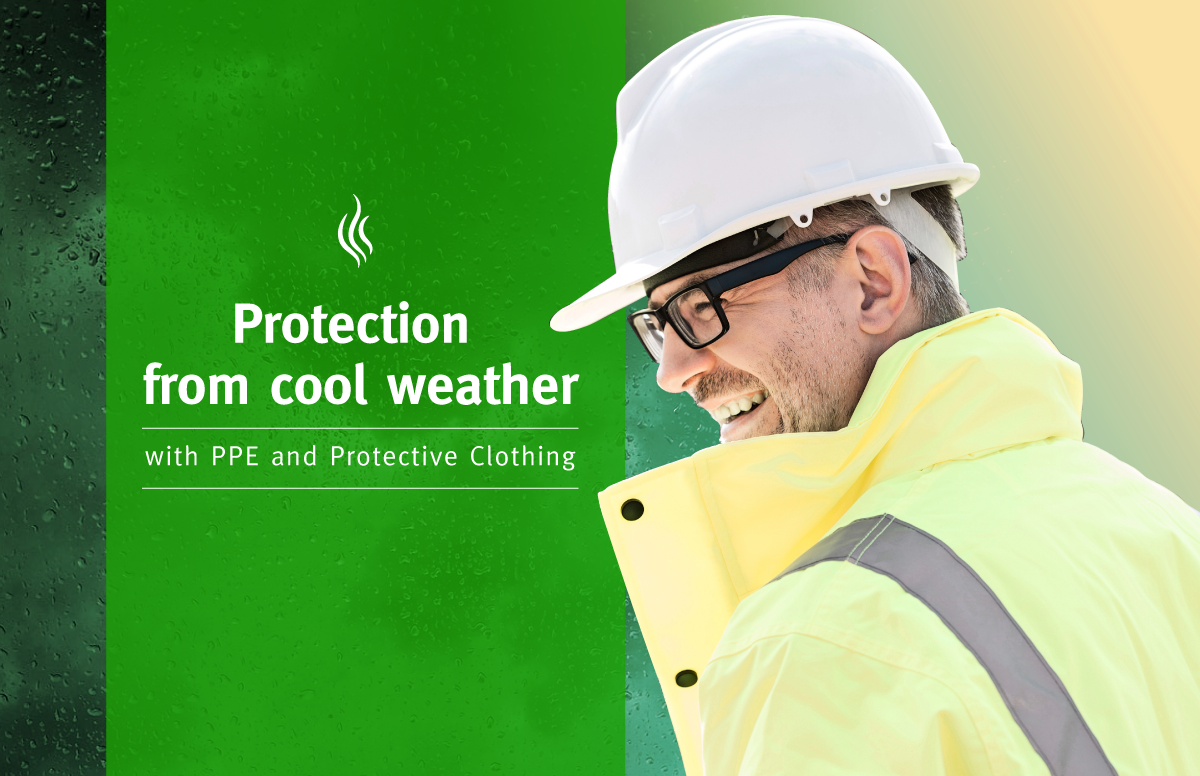Protection from cool weather with PPE and Protective Clothing

In the UK the weather can play a large part in the effectiveness of your outdoors workforce onsite. Not to mention the long term impact on employee health if weather related risks are not properly managed.
According to the Health & Safety Executive there are a number of measures, depending on weather, that can be taken to protect those working outdoors.
Working on site in cold environments
-
Ensure all personal protective equipment issued is appropriate and compliant.
-
Provide mobile facilities for warming up, and encourage the drinking of warm fluids such as soup or hot drinks.
-
Introduce more frequent rest breaks in warm areas.
-
Consider delaying the work – can it be undertaken at warmer times of the year without compromising on safety?
-
Educate workers about recognising the early symptoms of cold stress
Protective Clothing For Cooler Climates
Protecting against the weather is achievable with carefully planned layers and suitable rest breaks in warm areas.
Layers are a good way to protect against the cold. A combination of thermal clothing including baselayers, soft shells and waterproof layers protect the core of the body from wintery weather.
Most waterproof layers like High-Visibility jackets or vests promote the visibility of employees to moving vehicles and construction site traffic. The vivid colour and reflective strips used in high-vis clothing are designed to protect the user. Poor lighting, dark evenings or just to stand out to traffic are all reasons to wear high-vis clothing.
The Health and Safety Executive states that the use of high visibility clothing depends upon the requirements of a task. The choice of clothing should not only take into account lighting conditions at the workplace. It is also important to consider the effect of conditions such as fog and snow. The task that is being completed should also be considered when selecting the appropriate PPE.
Core clothing layers combined with thermal gloves, socks and helmet liners help to protect from heat loss from the extremities. A fleece lining in gloves, jacket and helmet liners not only offers additional thermal protection but offers additional comfort.
Helmet liners can also come with a balaclava style face covering to keep the wearers ears and face protected from windchill. The JSP Thermal Helmet Liner has a detachable face covering ensuring the versatility of the helmet liner.
Footwear not only offers protection for on site hazards but also provides protection from the elements. Waterproof safety boots, such as site wellingtons provide the protection of toe caps, with the waterproof benefits of a traditional wellington. For additional thermal protection add thermal layers underneath your waterproof protection. Thermal socks and boot liners to help insulate feet and lower legs while in boots.
Rigger boots, much like wellingtons provide a waterproof membrane to keep feet dry while working. Rigger boots are a very versatile work boot offering thermal insulation, waterproof membranes, heat resistance and even a water resistant upper.
Find out more details from the Health & Safety Executive about Workplace Welfare & Temperatures.
More News >>

